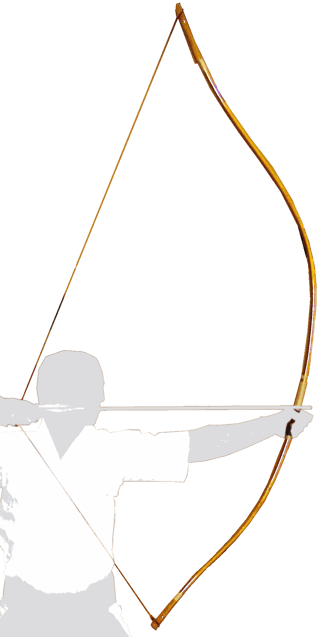Japanese Yumi
Bicéphal [Public domain], via Wikimedia Commons
These were made of a composite of bamboo, leather, and other wood and definitely the same length as the longbow. Note, these did not typically use sinew and bone and developed in Japan because bamboo was plentiful, easy to harvest, and cheap as a material but did not do well as single piece construction (like say yew).
Qing Dynasty Horn Bows
These bows were typically just a little under 6 ft. Making them a candidate as a long bow. Made in similar fashion to the Mongol bow (which these were heavily influences on) with sinew, bone, leather, and wood.
Improvement on Longbow
From standing position on the ground - none. The Longbow would be as powerful if not more-so with all the usual trade-offs based on the individual archer, location being used at, and type of armor being used by enemies (heavy armor and Tate).
For use on horse back - you cannot do this with a longbow. The size with the shooting style of an English Longbow makes it unsuitable for horseback whereas one of the primary usages of the Asian model composite bows was horseback archery.
So the real answer to "are there significant improvements" is: it depends.
Fighting in heavily wooded area or any other location where you can get bow snagged easily? Then the Qing bow's slightly smaller size would be worth the reduction in penetration. Fighting armored knights on open fields with plenty of horses available? Then the Yumi could be a better option for "shock" tactics. Other story-based reason - then fit to bow as needed.

